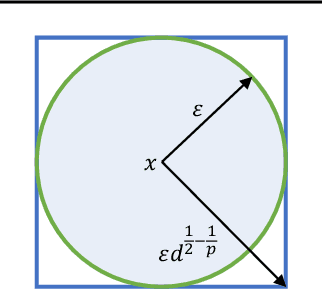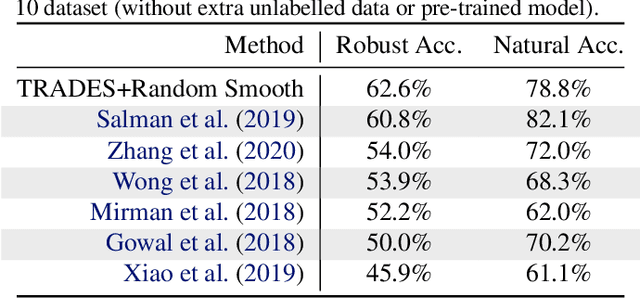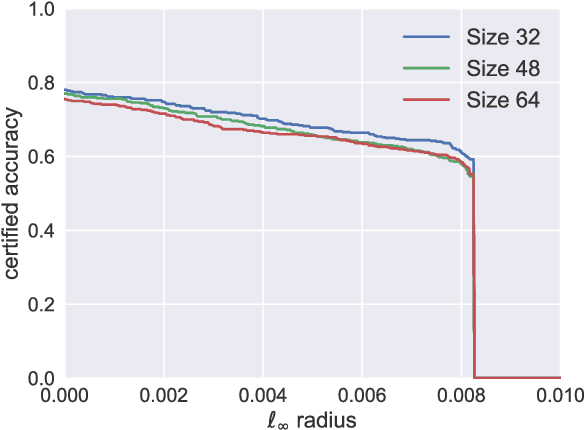Random Smoothing Might be Unable to Certify $\ell_\infty$ Robustness for High-Dimensional Images
Paper and Code
Mar 05, 2020


We show a hardness result for random smoothing to achieve certified adversarial robustness against attacks in the $\ell_p$ ball of radius $\epsilon$ when $p>2$. Although random smoothing has been well understood for the $\ell_2$ case using the Gaussian distribution, much remains unknown concerning the existence of a noise distribution that works for the case of $p>2$. This has been posed as an open problem by Cohen et al. (2019) and includes many significant paradigms such as the $\ell_\infty$ threat model. In this work, we show that any noise distribution $\mathcal{D}$ over $\mathbb{R}^d$ that provides $\ell_p$ robustness for all base classifiers with $p>2$ must satisfy $\mathbb{E}\eta_i^2=\Omega(d^{1-2/p}\epsilon^2(1-\delta)/\delta^2)$ for 99% of the features (pixels) of vector $\eta\sim\mathcal{D}$, where $\epsilon$ is the robust radius and $\delta$ is the score gap between the highest-scored class and the runner-up. Therefore, for high-dimensional images with pixel values bounded in $[0,255]$, the required noise will eventually dominate the useful information in the images, leading to trivial smoothed classifiers.
 Add to Chrome
Add to Chrome Add to Firefox
Add to Firefox Add to Edge
Add to Edge